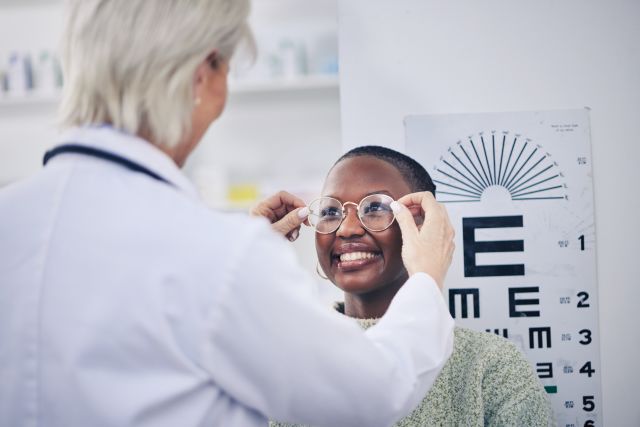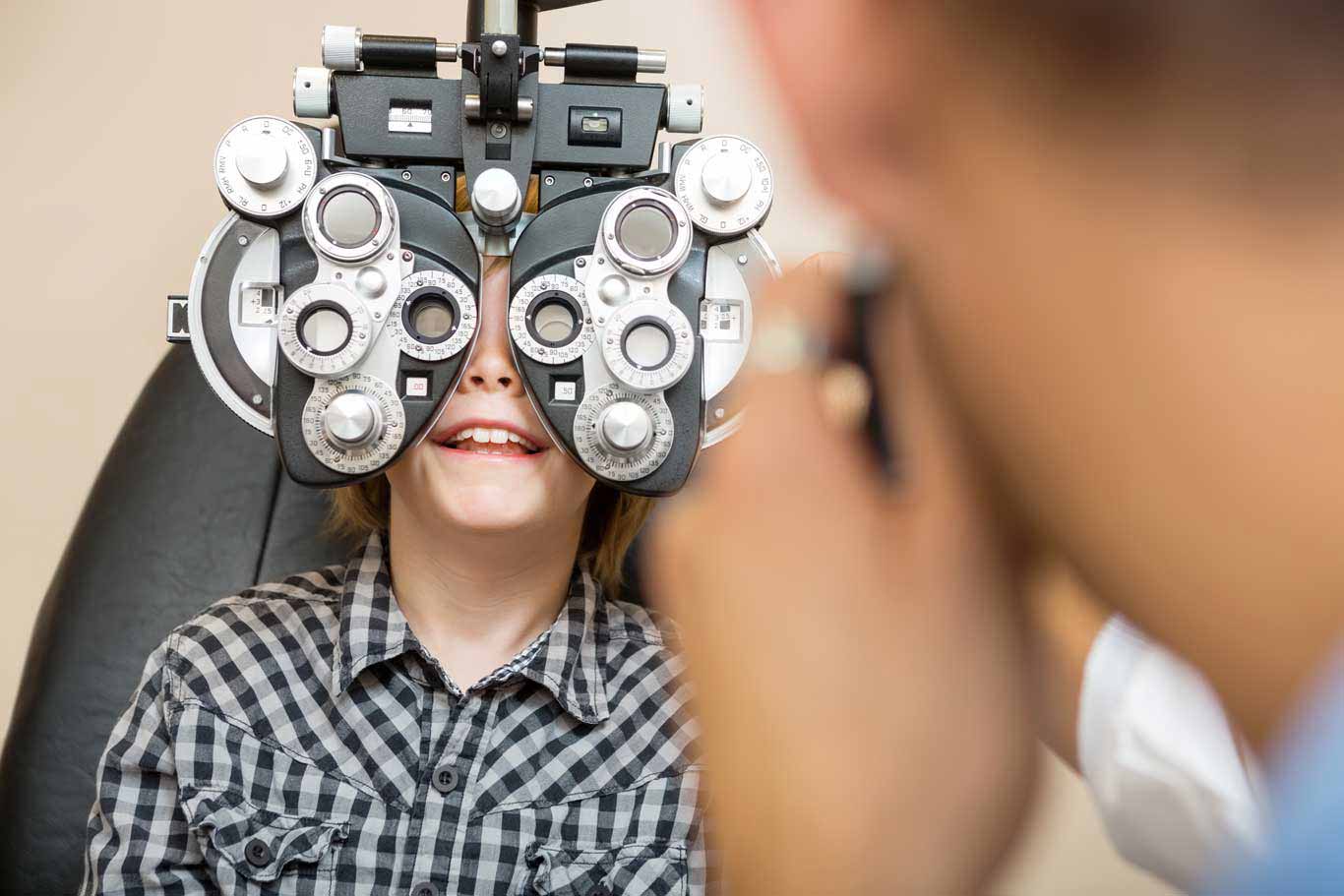Trustworthy Eye Doctor for All Your Vision Needs in Riverside
Trustworthy Eye Doctor for All Your Vision Needs in Riverside
Blog Article
The Comprehensive Eye Exam: What to Anticipate During Your Visit to the Eye Doctor
A browse through to the eye doctor for an extensive eye test is even more than a routine check-up; it is a crucial action in guarding your aesthetic health. What exactly occurs during the eye health and wellness assessment, and how does it influence the prescription process?
Initial Consultation
The initial examination during an eye test functions as an essential structure for comprehending a person's aesthetic wellness requirements. This stage establishes the tone for the whole evaluation process, enabling the eye doctor to gather crucial details about the patient's case history, way of living, and specific vision issues. By diligently reviewing any kind of pre-existing problems, medications, or previous surgical treatments, the eye care expert can tailor the exam to attend to specific requirements efficiently.

Additionally, the first consultation is a chance for people to articulate any type of problems or concerns, fostering a collaborative connection with their medical care provider. This communication not only ensures that the patient really feels notified and comfortable yet additionally equips them to take part proactively in their eye wellness administration. Collectively, these discussions make it possible for the eye doctor to create a personalized exam strategy, making certain optimum care and exact medical diagnosis.
Visual Acuity Test
Starting the core elements of an eye examination, the visual acuity examination is designed to assess the sharpness and quality of a patient's vision. This important analysis helps figure out how well a person can recognize letters or signs at a standardized range, typically making use of a Snellen chart (Eye Doctor Optometrist). The chart comprises rows of letters that lower in dimension inside out, with the person positioned at a traditional distance of 20 feet
During the examination, the individual is asked to cover one eye and review aloud the tiniest line of letters they can see clearly. This procedure is repeated for the various other eye. The results are recorded as a fraction, with 20/20 vision showing typical aesthetic acuity-- where the individual can see at 20 feet what an individual with regular vision can see at that range.
The visual skill examination also identifies potential refractive errors such as myopia, astigmatism, or hyperopia, which could necessitate restorative lenses. By developing a baseline of aesthetic efficiency, the test is an indispensable diagnostic device that helps the eye treatment specialist in creating an ideal treatment strategy customized to the client's one-of-a-kind visual needs.
Eye Health And Wellness Evaluation
Adhering to the visual skill examination, a thorough eye wellness evaluation is conducted to make certain the general well-being of the eyes. This important section of the eye examination includes a comprehensive assessment of both the interior and outside frameworks of the eye.
Next, attention changes to the interior frameworks. With using ophthalmoscopy or fundus photography, the retina, optic nerve, and capillary are meticulously examined. This step is vital for identifying problems such as retinal detachment, glaucoma, or diabetic retinopathy. In several instances, pupil expansion is done to boost visibility of the inner eye frameworks, although this might cause short-term light sensitivity for the person.
In addition, intraocular pressure is measured to screen for glaucoma danger. This is typically done utilizing tonometry, which can spot elevated pressure degrees that might suggest potential damages to the optic nerve. Jointly, these evaluations develop a detailed evaluation to keep eye health.
Refraction and Prescription
Refraction is a sophisticated procedure performed by eye care specialists to determine the specific lens power required to correct refractive mistakes such as nearsightedness, astigmatism, hyperopia, and presbyopia. The goal of this treatment is to analyze how light bends as it passes via the eye, permitting the professional to establish whether corrective lenses are necessary for improved visual acuity.
Throughout the refraction process, the patient is asked to browse a phoropter, a device that includes various lenses. The specialist will methodically transform these lenses and ask the patient to contrast clarity between alternatives till the most effective feasible vision is attained. This procedure is critical in crafting an exact prescription that specifies the ideal lens power for glasses or call lenses.
The prescription acquired from this procedure not only enhances vision yet also works as a structure for choosing suitable corrective eyeglasses. It is necessary to guarantee that prescriptions are on a regular basis updated, as modifications in vision can occur with time, highlighting the relevance of regular eye examinations. This precise focus to information helps keep clear, comfortable vision in life.
Follow-Up Referrals

Throughout a follow-up see, the eye physician will certainly carry out a series of tests to evaluate visual skill and check for any changes in vision that could require an upgrade to the prescription. Additionally, the follow-up provides a chance to talk about any type of discomfort or problems experienced with current eyewear. Adjustments can be made to ensure comfort and efficacy, whether with lens modification or read frame modifications.
For patients with ongoing conditions such as glaucoma, diabetes-related eye problems, or macular degeneration, more frequent follow-ups might be necessary. These appointments are important for managing and potentially reducing the progression of eye condition. Following these suggestions can substantially add to keeping visual wellness and stopping long-term issues.
Final Thought
The thorough eye examination is a vital procedure for maintaining aesthetic wellness, including a thorough assessment of medical background and vision problems. go right here Key elements include the aesthetic acuity test, which assesses vision clarity, and the eye wellness analysis, which examines the overall condition of the eyes.
A browse through to the eye medical professional for an extensive eye examination is more than a routine exam; it is a crucial step in securing your visual health and wellness.Kicking off the core parts of an eye evaluation, the aesthetic skill examination is made to assess the intensity and clarity of a patient's vision.Following the visual skill examination, a thorough eye health and wellness assessment is carried out to guarantee the overall health of the eyes. These gos to allow the eye care professional to monitor adjustments in vision, upgrade prescriptions, and evaluate the total health of the eyes. Secret parts include the visual acuity test, which evaluates sight clearness, and the eye wellness analysis, which examines the total problem of the see post eyes.
Report this page